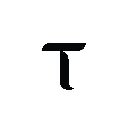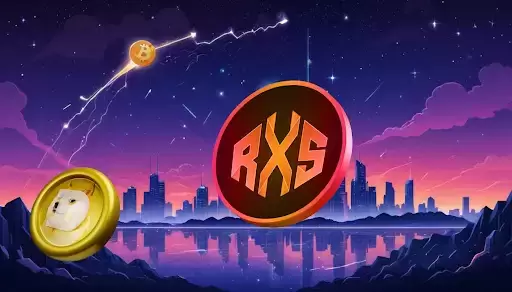 |
|
 |
|
 |
|
 |
|
 |
|
 |
|
 |
|
 |
|
 |
|
 |
|
 |
|
 |
|
 |
|
 |
|
 |
|
眾所周知,自從 OpenAI 的法學碩士幾年前推出以來,人工智慧 (AI) 一詞已進入主流術語。

With the launch of OpenAI’s LLM a couple of years ago, the term artificial intelligence (AI) has entered mainstream parlance. And it shows no sign of slowing down.
隨著幾年前 OpenAI 法學碩士課程的推出,人工智慧 (AI) 一詞已進入主流詞彙。而且沒有任何放緩的跡象。
A report by Big 4 consulting giant McKinsey & Co. shows that interest in AI tech domains (such as generative AI) has increased by a staggering 6300%.
四大顧問大廠麥肯錫的報告顯示,人們對人工智慧技術領域(例如生成式人工智慧)的興趣增加了驚人的 6300%。
This explosive growth is further backed by a surge in investment pouring into this space, with researchers noting a sharp jump from $4 billion in 2019 to a whopping $36 billion last year.
這一爆炸性成長得到了湧入該領域的投資激增的進一步支持,研究人員指出,投資額從 2019 年的 40 億美元大幅躍升至去年的 360 億美元。
And not only that—AI-related job postings have also increased by an impressive 111% between 2022 and 2023.
不僅如此,2022 年至 2023 年間,與人工智慧相關的職缺發布數量也增加了 111%,令人印象深刻。
So, as AI continues to permeate various facets of our daily lives — from healthcare and finance to education and entertainment — there is a growing need for decentralized AI systems that are trustworthy, unbiased, and secure.
因此,隨著人工智慧繼續滲透到我們日常生活的各個方面——從醫療保健和金融到教育和娛樂——對值得信賴、公正和安全的去中心化人工智慧系統的需求日益增長。
Enter NeurochainAI, a project that has rapidly gained traction thanks to its Decentralized AI as a Service (DAIAS) framework, designed to help restructure the way in which businesses (of any size) and communities around the world can interact with AI systems.
NeurochainAI 是一個項目,由於其去中心化人工智慧即服務 (DAIAS) 框架而迅速獲得關注,該框架旨在幫助重組世界各地的企業(任何規模)和社區與人工智慧系統互動的方式。
At the heart of NeurochainAI’s innovative approach lies a unique consensus mechanism that combines Proof of Work (PoW) and Proof of Stake (PoS) — aptly named Proof of Work through Staking (PoWtS).
NeurochainAI 創新方法的核心在於一種獨特的共識機制,它結合了工作量證明 (PoW) 和權益證明 (PoS)——恰當地稱為透過權益證明的工作量證明 (PoWtS)。
This hybrid model plays a crucial role in ensuring trust and fairness in AI task validation within the platform’s decentralized infrastructure.
這種混合模型在確保平台去中心化基礎設施內人工智慧任務驗證的信任和公平性方面發揮著至關重要的作用。
From the outside looking in, NeurochainAI’s infrastructure leverages the power of two main layers: the Layer-1 (L1) NCN Chain and the Layer-3 (L3) NCN AI.
從外部看,NeurochainAI 的基礎設施利用了兩個主要層的力量:第 1 層 (L1) NCN 鍊和第 3 層 (L3) NCN AI。
To elaborate, the L1 NCN Chain serves as the project’s foundational basis, helping manage and store validation information on mined and burned coins for activities that occur on its L3.
詳細來說,L1 NCN 鏈作為該專案的基礎,幫助管理和儲存 L3 上發生的活動的開採和燃燒代幣的驗證資訊。
On the other hand, the L3 NCN AI houses all the project’s AI-related features, including its decentralized GPU network, AI model marketplace, and AI dApp store.
另一方面,L3 NCN AI 包含了該專案所有與 AI 相關的功能,包括去中心化 GPU 網路、AI 模型市場和 AI dApp 商店。
However, the magic happens when NeurochainAI’s two nodes, i.e., L1 Neuron Validator Nodes and L3 AI Mining Nodes, interact with one another.
然而,當 NeurochainAI 的兩個節點(即 L1 神經元驗證節點和 L3 AI 挖礦節點)相互交互作用時,奇蹟就會發生。
The Neuron Validator Nodes act as lite validators, confirming and batching the work done on the L3 for transaction execution on the L1, whereas the AI Mining Nodes perform the actual AI computations on the L3.
神經元驗證器節點充當精簡驗證器,確認並批次在 L3 上完成的工作,以便在 L1 上執行事務,而 AI 挖掘節點則在 L3 上執行實際的 AI 計算。
Moreover, it is during these interactions that the aforementioned PoWtS mechanism comes into play.
此外,正是在這些交互過程中,上述 PoWtS 機制發揮了作用。
When an AI Mining Node receives a task, it processes the message and computes the response — similar to cryptographic calculations on a regular PoW blockchain.
當人工智慧挖礦節點收到任務時,它會處理訊息並計算回應 - 類似於常規 PoW 區塊鏈上的加密計算。
This compute acts as a PoW on the NCN AI L3 and must be validated by Neuron Validator Nodes through PoS on NCN Chain L1.
該計算充當 NCN AI L3 上的 PoW,並且必須由神經元驗證器節點透過 NCN 鏈 L1 上的 PoS 進行驗證。
AI Mining Nodes receive rewards for the AI computations performed on the decentralized physical infrastructure network (DePIN), while Neuron Validator Nodes receive rewards for mining new coins to validate these responses and filter out bad actors.
人工智慧挖礦節點因在去中心化實體基礎設施網路(DePIN)上執行的人工智慧運算而獲得獎勵,而神經元驗證器節點則因挖掘新硬幣以驗證這些回應並過濾掉不良行為者而獲得獎勵。
From the outside looking in, NeurochainAI’s PoWtS mechanism prevents malicious activities and ensures accurate attribution of rewards to deserving participants.
從外部看,NeurochainAI 的 PoWtS 機制可以防止惡意活動,並確保將獎勵準確分配給應得的參與者。
By requiring Neuron Validator Nodes to stake tokens, the system creates a financial incentive for them to act honestly.
透過要求神經元驗證器節點抵押代幣,系統為他們誠實行事提供了經濟誘因。
Any attempt to validate incorrect computations or collude with malicious AI Mining Nodes puts the participant’s stake at risk.
任何驗證錯誤計算或與惡意人工智慧挖礦節點串通的嘗試都會使參與者的權益面臨風險。
Such a novel design also maximizes the reliability and accuracy of task validation in several ways.
這種新穎的設計還透過多種方式最大限度地提高了任務驗證的可靠性和準確性。
Firstly, validators with a significant stake are more likely to act in the network’s best interest to protect their investment, ensuring a high degree of security.
首先,擁有大量股份的驗證者更有可能以網路的最佳利益為出發點來保護他們的投資,從而確保高度的安全性。
Similarly, the PoWtS module ensures that rewards are distributed fairly based on the actual work performed and validated.
同樣,PoWtS 模組確保根據實際執行和驗證的工作公平分配獎勵。
Lastly, by involving its community in its native validation process, NeurochainAI leverages collective intelligence to maintain high standards of data accuracy and model performance.
最後,透過讓社群參與其本機驗證過程,NeurochainAI 利用集體智慧來維持高標準的資料準確性和模型表現。
NeurochainAI is on the path to creating this fair validation process through launching its Token Generation Event (TGE) last Friday, August 9th, with its $NCN token becoming available.
NeurochainAI 正在透過於 8 月 9 日上週五啟動其代幣生成活動 (TGE) 來創建這個公平的驗證流程,並推出 $NCN 代幣。
This token launch will be immediately followed and supported by the introduction of node staking to foster network decentralization with a fair way to grow a validator network.
此次代幣發布後,將立即引入節點質押並提供支持,以促進網路去中心化,並以公平的方式發展驗證器網路。
While NeurochainAI’s approach is unique, it’s worth noting that other projects in the decentralized artificial intelligence (DE-AI) space are also exploring innovative ways to ensure trust and fairness.
雖然 NeurochainAI 的方法很獨特,但值得注意的是,去中心化人工智慧 (DE-AI) 領域的其他項目也在探索確保信任和公平的創新方法。
For instance, SingularityNET leverages its AGIX token to purchase AI services, participate in network governance, and stake for network consensus.
例如,SingularityNET 利用其 AGIX 代幣來購買人工智慧服務、參與網路治理並為網路共識提供權益。
Fetch.ai employs a Useful Proof-of-Work (UPoW) consensus mechanism and uses its FET token for transactions, accessing machine learning utilities, and staking for network validation.
Fetch.ai 採用有用的工作量證明 (UPoW) 共識機制,並使用其 FET 代幣進行交易、存取機器學習實用程式以及進行網路驗證。
Finally, BitTensor uses a Proof of Intelligence (PoI) consensus mechanism
最後,BitTensor 使用了智力證明(PoI)共識機制
免責聲明:info@kdj.com
所提供的資訊並非交易建議。 kDJ.com對任何基於本文提供的資訊進行的投資不承擔任何責任。加密貨幣波動性較大,建議您充分研究後謹慎投資!
如果您認為本網站使用的內容侵犯了您的版權,請立即聯絡我們(info@kdj.com),我們將及時刪除。
-

-

- Shiba Inu(Shib)價格飆升很樂觀,但數學揭示了它的天花板
- 2025-04-20 22:55:13
- 到2030年,SHIB每年從當前水平加倍,仍然將交易低於0.0005美元
-

- 新的區塊鏈信息表明,大型投資者仍控制著INU加密貨幣市場
- 2025-04-20 22:50:13
- 加密創始人說,今天的$ 1K XRP包可能會成為明天的大獎。
-

-

-

-

- 有多少比特幣持有人獲利?深入了解當前市場趨勢
- 2025-04-20 22:45:12
- 隨著加密貨幣市場的不斷發展,通常會出現一個關鍵問題:實際上有多少比特幣持有人在獲利?
-

- 由於本週幾個項目發布了很大的收益,模因硬幣再次加熱。
- 2025-04-20 22:45:12
- 隨著比特幣徘徊在80,000美元左右,首次表現出比技術股票的波動率較小,資金正在恢復為較小的加密貨幣。
-



























































